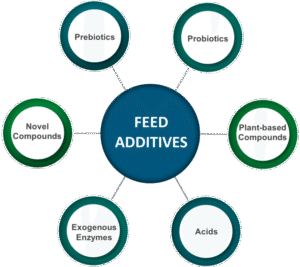The morphological characteristics of arachnids are distinctive and help differentiate them from other arthropods. Here’s a detailed overview of their key features:
1. Body Segmentation
• Two Main Body Regions:
o Prosoma (Cephalothorax): The front part of the body, where the head and thorax are fused together. It bears the eyes, mouthparts, legs, and sensory organs.
o Opisthosoma (Abdomen): The posterior part of the body, which contains the digestive, reproductive, and respiratory organs. It can be segmented or unsegmented, depending on the arachnid order.
2. Number of Legs
• Eight Legs: Arachnids are characterized by having four pairs of jointed legs, totaling eight legs. This is a key feature that differentiates them from insects, which have six legs.
• Leg Structure: Each leg has multiple segments, including the coxa, trochanter, femur, patella, tibia, metatarsus, and tarsus. The number and shape of these segments can vary between species.
3. Chelicerae (Mouthparts)
• Definition: Chelicerae are specialized appendages located near the mouth, used for feeding or defense.
• Function: In spiders, the chelicerae are modified into fangs that inject venom, while in scorpions, they function as pincers to manipulate prey.
• Variation: The shape and size of chelicerae vary widely among different orders and can provide clues for species identification.
4. Pedipalps
• Location: Pedipalps are a pair of appendages located just behind the chelicerae.
• Function: They serve various roles depending on the species, such as sensory perception, feeding, locomotion, and reproduction. In male spiders, pedipalps are often modified for transferring sperm to females during mating.
• Morphological Differences: In scorpions, the pedipalps are large and claw-like (pincers), used for grasping prey.
5. Eyes
• Simple Eyes: Most arachnids have simple eyes called ocelli, which provide limited vision compared to the compound eyes of insects.
• Number and Arrangement: The number and arrangement of eyes vary widely among species. Spiders, for example, typically have eight eyes, arranged in specific patterns that help in their identification.
6. Exoskeleton
• Chitinous Exoskeleton: Arachnids have a hard exoskeleton made of chitin, which provides protection and structural support.
• Molting: They undergo molting (ecdysis) as they grow, shedding their exoskeleton to develop a new, larger one.
7. Respiratory Structures
• Book Lungs: Some arachnids, like spiders and scorpions, have book lungs—internal structures with thin layers resembling the pages of a book, which facilitate gas exchange.
• Tracheae: Other arachnids, such as mites and some spiders, have a system of tracheal tubes that transport oxygen directly to their tissues.
• Spiracles: Openings on the abdomen through which air enters the respiratory system.
8. Spinnerets (in Spiders)
• Location: Located at the rear of the abdomen, spinnerets are silk-producing organs used by spiders to create webs, cocoons, and egg sacs.
• Function: Different species use silk for various purposes, including trapping prey, building shelters, and protecting offspring.
9. Tail and Sting (in Scorpions)
• Segmented Tail: Scorpions have a long, segmented tail that curves over the body and ends in a venomous stinger.
• Venom Gland: The stinger contains venom glands used for defense and subduing prey.
10. Sexual Dimorphism
• Difference between Males and Females: In many arachnid species, males and females have distinct differences in size, coloration, or structure, which is referred to as sexual dimorphism.
• Pedipalp Modification: In male spiders, the pedipalps are often modified into specialized structures for mating.
Summary of Morphological Characteristics
• Body Regions: Two main parts (prosoma and opisthosoma).
• Legs: Eight legs with multiple segments.
• Mouthparts: Chelicerae for feeding and defense.
• Pedipalps: Used for sensory functions, feeding, and mating.
• Eyes: Simple eyes (ocelli) with various arrangements.
• Exoskeleton: Hard, chitinous structure with molting ability.
• Respiration: Book lungs or tracheae for gas exchange.
• Silk Production: Spinnerets in spiders for silk creation.
• Tail and Sting: Present in scorpions for defense.
These morphological features are essential for the identification and classification of arachnids and help distinguish them from other arthropods.
Thank you for reading. Don't forget to subscribe & share!









